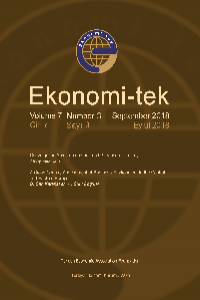Financial Fragility, Exchange-Rate Regimes, and Sudden Stops in a Small Open Economy
We model a typical Asian economy in crisis using a dynamic general equilibrium technique and establishing exchange rates from nontrivial fiat currency demands. Sudden stops/bank panics are possible and are essential for evaluating the merits of alternative exchange-rate regimes. Strategic complementarities contribute to the severe indeterminacy of a continuum of equilibria. Social welfare and the scope of equilibria are also associated with the underlying policy regime and the built-in Sequential Checking Mechanism, including liquidity, solvency, and incentive-compatibility constraints in the model. Combining domestic and foreign reserve requirements promotes stability under a floating exchange-rate regime; however, this increases the scope for panic equilibria under both floating and fixed regimes. While backing the money supply reduces financial fragility under both systems, it only acts as a stabilizer in a fixed regime.
Anahtar Kelimeler:
Sudden stops, exchange-rate regimes, multiple reserve requirements
Financial Fragility, Exchange-Rate Regimes, and Sudden Stops in a Small Open Economy
We model a typical Asian economy in crisis using a dynamic general equilibrium technique and establishing exchange rates from nontrivial fiat currency demands. Sudden stops/bank panics are possible and are essential for evaluating the merits of alternative exchange-rate regimes. Strategic complementarities contribute to the severe indeterminacy of a continuum of equilibria. Social welfare and the scope of equilibria are also associated with the underlying policy regime and the built-in Sequential Checking Mechanism, including liquidity, solvency, and incentive-compatibility constraints in the model. Combining domestic and foreign reserve requirements promotes stability under a floating exchange-rate regime; however, this increases the scope for panic equilibria under both floating and fixed regimes. While backing the money supply reduces financial fragility under both systems, it only acts as a stabilizer in a fixed regime.
___
- Bordo, M.D., (2006), “Sudden Stops, Financial Crises, and Original Sin in Emerging Countries: Déjà vu?”, NBER Working Paper 12393.
- Bordo, M.D. and C.M. Meissner, (2006), “The Role of Foreign-Currency Debt in Financial Crises: 1880-1913 versus 1972-1997”, Journal of Banking and Finance, 30:3, pp.299-329.
- Boyd, John H., Pedro Gomis, Sungkyu Kwak, Bruce D. Smith, (2000), A User’s Guide to Banking Crises. World Bank, April. www1.worldbank.org/finance/assets/images/depins05.pdf
- Braggion, F., L.J. Christiano, and J. Roldos, (2009), “Optimal Monetary Policy in a Sudden Stop”, Journal of Monetary Economics, 56, pp. 582-595.
- Calvo, G.A., A. Izquierdo, and L. Mejia, (2004), “On the Empirics of Sudden Stops: the Relevance of Balance-Sheet Effects”, NBER Working Paper 10520.
- Calvo, G.A., A. Izquierdo, and E. Talvi, (2006), “Sudden Stops and Phoenix Miracles in Emerging Markets”, American Economic Review, 96, pp. 405-410.
- Calvo, G.A. and C.M. Reinhart, (1999), “When Capital Inflows Come to a Sudden Stop: Consequences and Policy Options”, University of Maryland Working Paper.
- Calvo, Guillermo A. and Erensto Talvi, (2005), “Sudden Stop, Financial Factors and Economic Collpase in Latin America: Learning from Argentina and Chile”, NBER Working Paper No. 11153, February.
- Chang, R. and A. Velasco, (2000a), “Financial Fragility and Exchange-Rate Regime”, Journal of Economic Theory, 92, pp.1-34.
- Chang, R. and A. Velasco, (2000b), “Banks, Debt Maturity, and Financial Crises”, Journal of International Economics, 51, pp. 169-194.
- Chang, R. and A. Velasco, (2001), “A Model of Financial Crises in Emerging Markets”, The Quarterly Journal of Economics, 116, pp. 489-517.
- Copper, R. and T.W. Ross, (1998), “Bank Runs: Liquidity Costs and Investment Distortions”, Journal of Monetary Economics, 41, pp. 27-38.
- Curdia, V., (2008), “Optimal Monetary Policy under Sudden Stops”, Federal Reserve Bank of New York Staff Reports.
- Devereux, M.B., P.R. Lane, and J. Xu, (2006), “Exchange Rates and Monetary Policy in Emerging Market Economies”, The Economic Journal, 116, pp. 478-506.
- Diamond, D.W. and P.H. Dybvig, (1983), “Bank Runs, Deposit Insurance, and Liquidity”, The Journal of Political Economy, 91, pp. 401-419.
- Diamond, D.W. and R.G. Rajan, (2001), “Liquidity Risk, Liquidity Creation, and Financial Fragility: A Theory of Banking”, Journal of Political Economy, 109, pp. 287-327.
- Ennis, H.M. and T. Keister, (2003), “Economic growth, liquidity, and bank runs”, Journal of Economic Theory, 109, pp. 220-245.
- Ennis, H.M. and T. Keister, (2006), “Bank Runs and Investment Decisions Revisited”, Journal of Monetary Economics, 53, pp. 217-232.
- Ennis, H.M. and T. Keister, (2010) “Banking panics and policy responses”, Journal of Monetary Economics, 57, pp. 404-419.
- Frankel, J.A., S. L. Schmukler, and L. Serven, (2002), “Global Transmission of Interest Rates: Monetary Independence and Currency Regime”, NBER Working Paper 8828.
- Green, E.J. and P. Lin, (2003), “Implementing Efficient Allocations in a Model of Financial Intermediation”, Journal of Economic Theory, 109, pp.1-23.
- Goodhart, C. and P.J.R. Delargy, (1998), “Financial Crises: Plus ça Change, plus c'est la Même Chose”, International Finance, 1, pp. 261-287.
- Kaminsky, G.L. and C.M. Reinhart, (1999), “The Twin Crises: The Causes of Banking and Balance-of-Payments Problems”, American Economic Review, 89, pp. 473-500.
- Kaminsky, G., (2003), “Varieties of Currency Crises”, NBER Working Paper 10193.
- Kishi, M. and H. Okuda, (2001), “Prudential Regulation and Supervision of the Financial System in East Asia”, the Institute for International Monetary Affairs. Available at http://www.mof.go.jp/jouhou/kokkin/tyousa/tyou041g.pdf
- Lindgren, C.J., et al., (1999), “Financial Sector Crisis and Restructuring: Lessons from Asia”, International Monetary Fund, Occasional Paper 188.
- Peck, J. and K. Shell, (2003), “Equilibrium Bank Runs”, Journal of Political Economy, 111, pp. 103-123.
- Peck, J. and K. Shell, (2010), “Could Making Banks Hold Only Liquid Assets Induce Bank Runs?” Journal of Monetary Economics, 57, pp. 420-427.
- Reinhart, C.M. and K.S. Rogoff, (2008), “This Time is Different: A Panoramic View of Eight Centuries of Financial Crises”, NBER Working Paper 13882. Summers, L. H., (2000), “International Financial Crises: Causes, Prevention, and Cures”, American Economic Review 90, pp. 1-16.
- Wang, W.Y. and P.L. Hernandez-Verme, (2011), “Multiple Reserve Requirements and Equilibrium Dynamics in a Small Open Economy”, EconModels, 1-33. Society of Policy Modeling. http://econmodels.com/public/dbArticles.php
- ISSN: 2146-6173
- Yayın Aralığı: Yılda 3 Sayı
- Başlangıç: 2012
- Yayıncı: Türkiye Ekonomi Kurumu Vakfı
